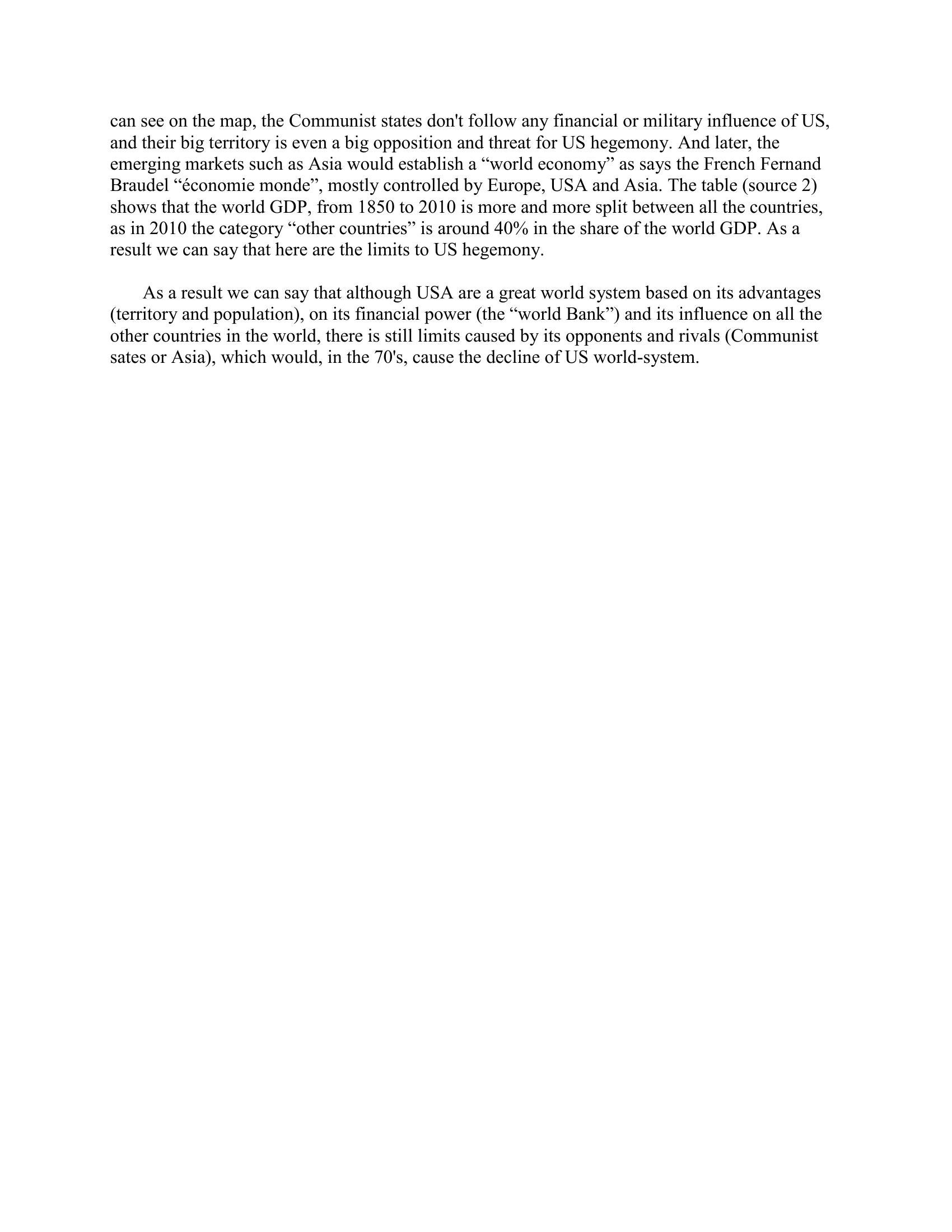THE CHARACTERISTICS OF THE US WORLD-SYSTEM
Publié le 22/01/2012

Extrait du document
After the two world wars, which cause the decline of Europe, the US world-system starts, thanks to winning of the war. It substitute to UK world economy, so we can see that Europe isn't controlling the world any longer.
«
can see on the map, the Communist states don't follow any financial or military influence of US,
and their big territory is even a big opposition and threat for US hegemony.
And later, the
emerging markets such as Asia would establish a “world economy” as says the French Fernand
Braudel “économie monde”, mostly controlled by Europe, USA and Asia.
The table (source 2)
shows that the world GDP, from 1850 to 2010 is more and more split between all the countries,
as in 2010 the c ategory “other countries” is around 40% in the share of the world GDP.
As a
result we can say that here are the limits to US hegemony.
As a result we can say that although USA are a great world system based on its advantages
(territory and populati on), on its financial power (the “world Bank”) and its influence on all the
other countries in the world, there is still limits caused by its opponents and rivals (Communist
sates or Asia), which would, in the 70's, cause the decline of US world -system..
»
↓↓↓ APERÇU DU DOCUMENT ↓↓↓
Liens utiles
- HISTOIRE DU MONDE [History of the World].
- GOVERNMENT : Le gouvernement Elections : Les élections The electoral system :
- anywher out of the world
- Georgi Dimitrov par Liliana Brisby Editor of " The World Today ", London Né en Bulgarie dans une famille d'ouvriers, Georgi Dimitrov est l'un des rares étrangers à avoir accédé aux plus hautes responsabilités au sein de l'État soviétique.
- Song of the Open Road Leaves of Grass, 1900 Walt Whitman 1 Afoot and light-hearted, I take to the open road, Healthy, free, the world before me, The long brown path before me, leading wherever I choose.

































